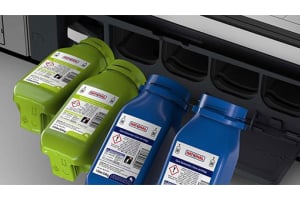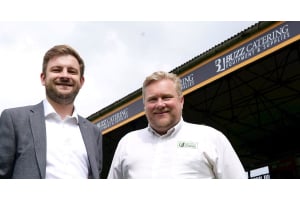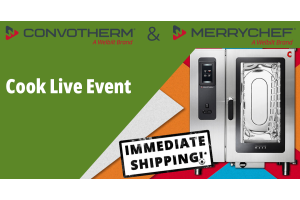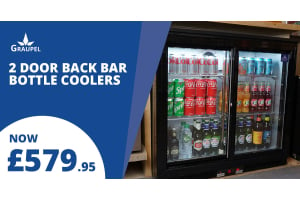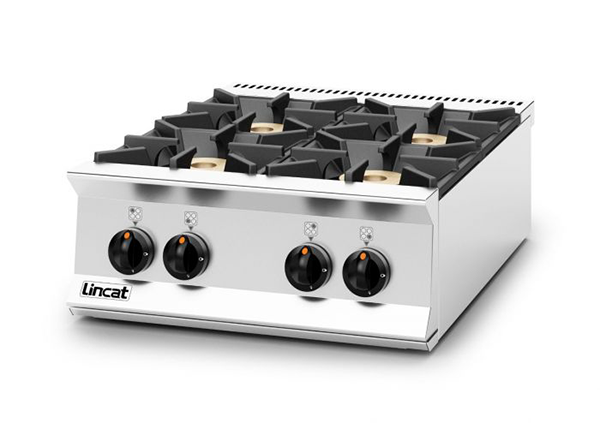
A common concept in domestic kitchens, induction hobs are now being integrated more into commercial catering establishments as their popularity grows. The sudden increase in their use is down to several factors including the growing concern to save energy to save on costs and the environment. Another is down to manufacturers improving the quality
One of the most influential factors is cost. A quick online search shows that the costs for induction hob models are significantly cheaper than a full commercial oven range for. It will cost you approximately £50-£1,500 for a single zone induction hob whereas an electric 4 grid induction oven unit could cost you up to approx. £2,000-10,000. This is down to the huge difference in the design and components.
Product lifetime
The lifetime of a product implication of how long your appliance can operate without a decrease in its performance, models that contain components intended for domestic use will have a typical lifetime of 2500 hour or 10hours a day for approximately a year. However, as these models not designed for continuous use, the possibility that a decrease in performance will occur much earlier than predicted. Catering establishments looking to use boiling hobs on a consistent daily basis will require a longer lasting appliance, most commercial manufacturers claim that their products have a lifetime of approx. Ten thousand hours and higher end give duty units have a lifetime of approx. Thirty thousand hours, around 10 hours a day for over eight years.
Type of Hob
Depending on the size and business of your catering establishment, the requirements for your kitchen equipment will change depending on what functions you need to carry out. Commercial hobs come in a range of different configurations.
1 ring boiling hobs provide a compact but hard-wearing appliance, perfect for small cafés and restaurants or sites where space is a premium.
2 ring boiling hobs provides the addition of another boiling ring providing dual cooking functionality and variable heat control, perfect for small-sized commercial kitchens.
4 ring boiling hobs are ideal for a busier commercial kitchen where the need for multi-cooking functionality is necessary to meet delivery times.
6 ring boiling hobs are the catering industry standard for boiling hobs as the 6 ring hobs provide plenty of cooking space for busy commercial kitchens.
Induction provides a quick energy saving method of cooking due to their magnetic heating and simplified operating design. Induction hobs transfer heat directly to Pan.
Commercial cooker hobs – sometimes establishments require a heavier duty appliance to meet there demands. Larger commercial cookers feature both open gas burners and electric hob as well as a large cooking cavity inside. Having dual integration commercial cookers allows multiple cooking.
Induction Key Points
Glass thickness - A big concern for those looking to buy is the strength of the glass and its durability in a commercial kitchen environment. The glass on a commercial induction hob will be around 6mm which is suitable for commercial use; most manufacturers will carry out drop tests to ensure the product is fit for purpose.
Power Ratings - Induction heat ranges from 2kw to 5kw in power, obviously the higher the rating will result in faster heat up times reducing boiling times, saving on energy consumption costs. However, the higher the power rating the likelihood that the price will increase as well.
Heat zone size – One feature that can affect the performance of an induction hob is the size of the pot being used on it. If for example, a 5kw induction zone is 270mm in diameter, using a smaller pot will mean a section of the heating coil has no contact not supplying any heat to the pot, this means that the full 5kw output isn’t used and heat times will increase. If the opposite occurs where the pot is larger than induction zone, the edges of the pan will not be receiving heat so the pan content in these areas will cook slower, ensuring you have the right sized equipment to use on the induction hobs will ensure you get maximum performance out of the appliance.
Model type – Induction units come in four main types, single, twin, four-zone, boiling tops and four-zone cooker ranges. The model you choose will be dependent on your needs in your kitchen environment as well as your budget and menu offerings. A single zone tabletop unit provides a cost-effective and portable model but will lack the power or flexibility of larger models like with commercial cooker ranges, however, these ranges will be the most expensive option
Not always the right choice – Despite induction providing many benefits; energy saving, faster heat up times, easy cleaning, heat control. However, this doesn’t mean its suitable for every kitchen. An induction unit is typically more expensive than gas or electric counterparts. In many places, electric costs are higher than gas meaning there is the potential for the energy saving advantage from the more efficient induction unit to be negated.



